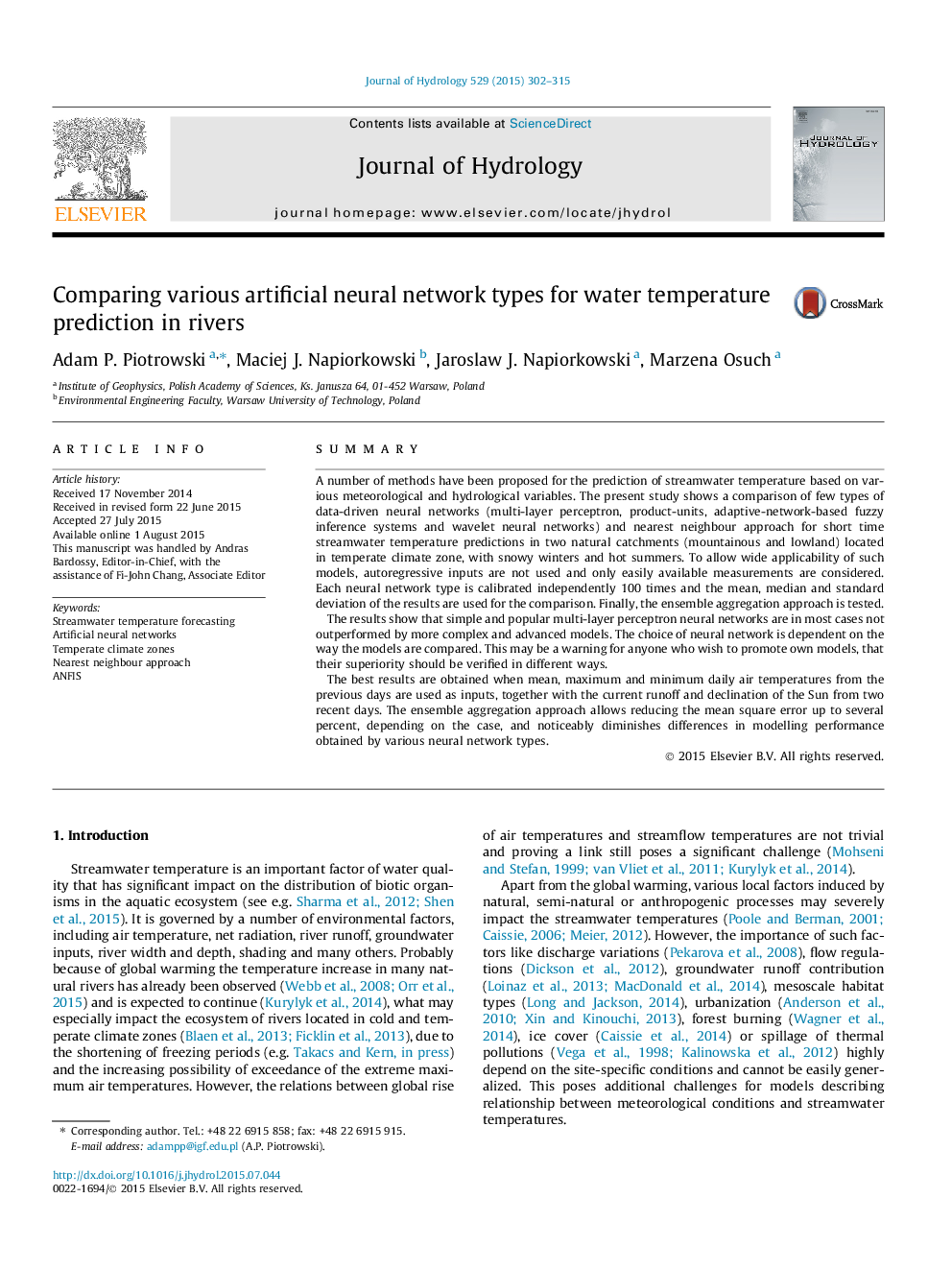| کد مقاله | کد نشریه | سال انتشار | مقاله انگلیسی | نسخه تمام متن |
|---|---|---|---|---|
| 6411004 | 1332887 | 2015 | 14 صفحه PDF | دانلود رایگان |
- Four ANN types are applied to streamwater temperature prediction.
- Tests are performed for lowland and mountainous rivers in temperate climate zones.
- The choice of the best ANN type depends on the way the comparison is performed.
- ANN ensemble aggregation approach should be used in practical applications.
- All ANN types outperform k-nearest neighbour approach.
SummaryA number of methods have been proposed for the prediction of streamwater temperature based on various meteorological and hydrological variables. The present study shows a comparison of few types of data-driven neural networks (multi-layer perceptron, product-units, adaptive-network-based fuzzy inference systems and wavelet neural networks) and nearest neighbour approach for short time streamwater temperature predictions in two natural catchments (mountainous and lowland) located in temperate climate zone, with snowy winters and hot summers. To allow wide applicability of such models, autoregressive inputs are not used and only easily available measurements are considered. Each neural network type is calibrated independently 100 times and the mean, median and standard deviation of the results are used for the comparison. Finally, the ensemble aggregation approach is tested.The results show that simple and popular multi-layer perceptron neural networks are in most cases not outperformed by more complex and advanced models. The choice of neural network is dependent on the way the models are compared. This may be a warning for anyone who wish to promote own models, that their superiority should be verified in different ways.The best results are obtained when mean, maximum and minimum daily air temperatures from the previous days are used as inputs, together with the current runoff and declination of the Sun from two recent days. The ensemble aggregation approach allows reducing the mean square error up to several percent, depending on the case, and noticeably diminishes differences in modelling performance obtained by various neural network types.
Journal: Journal of Hydrology - Volume 529, Part 1, October 2015, Pages 302-315
